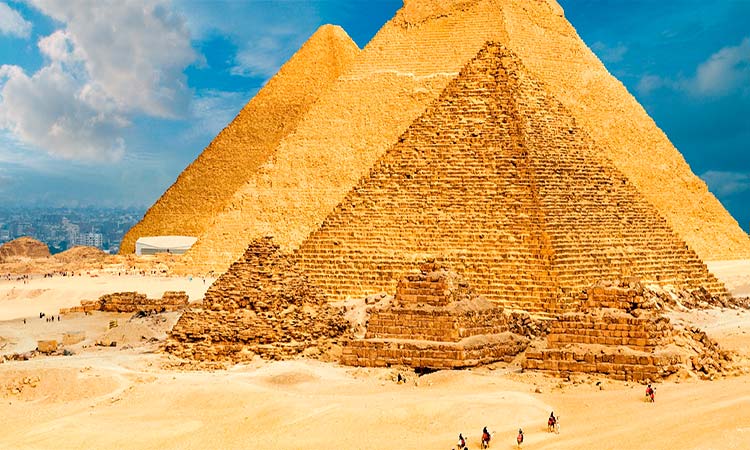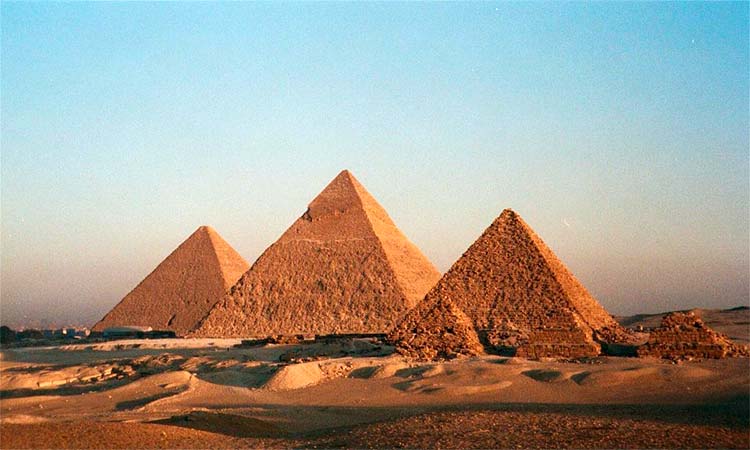Pyramids of ancient Egypt
During ancient times, Egypt was a wealthy and powerful country that produced many famous structures. One of these structures is the pyramid. This monument was constructed to honor the gods of the Egyptians.
The ancient pyramids of Egypt are very interesting and fraught with many secrets, which an experienced guide will definitely tell you about, which can be ordered here - excurzilla.com
After the tour, we recommend renting a car and going on a trip through the expanses of Egypt - bookingauto.com
Symbolism is a very important aspect of ancient Egyptian culture. They use symbols in many different ways. Some of the symbols are sacred and used in religious contexts. They may also be used in architectural designs, clothing, or ornaments. These symbols convey a specific meaning and have a profound effect on human psychology.
A very important symbol in ancient Egyptian hieroglyphics is the ankh, which represents immortality, and is also used to represent the divine mother Isis and the sun god Ra. The ankh also represents the two earliest gods in ancient Egyptian tradition, Osiris and Isis.
A large number of offerings to the gods are found within layers of pyramids. The great pyramid of Giza was one of the largest structures in ancient Egypt. It stood as tall as a modern building, and was constructed with two million stone blocks. It was completed around 2560 BCE. It is still unclear how the giant stone blocks were moved. Its design is also not known.
The Aztecs believed that the pyramids served as the homes of their gods. They also used them as places of ritual sacrifice and as resting places for their ancestors. Pyramids were also used for regular worship, astrology, and astronomy. They were constructed inside busy cities, and the ziggurats were centers of astronomy.
The Great Temple of Tenochtitlan has seven layers of pyramids. The first layer represents the sun, the next represents the sky goddess Nut, the next layers represent the ankh, the ankh is also depicted as a kite, and the last layer represents the sun god Ra.
The symbols used in ancient Egyptian culture are also found in many other cultures around the world. They are used in religious and architectural designs, as well as in clothing, hairpieces, and masks. They may also have phonetic value, and may be used as instructional signs or maps.
Construction
During the construction of the pyramids of ancient Egypt, there were many different methods employed. The Egyptian religion was very diverse, with many different gods and pharaohs. The pyramids were built using many different methods, including corvee labor, where workers worked from boats that brought materials to the construction site. They also used scaffolding to help reach high places.
Another method was to use pulleys to haul stones into place. These methods were used for both temples and pyramids. The Egyptians also used sleds to bring materials to the construction site. This was especially useful for large pyramids, where it was necessary to have a large amount of materials. It was also necessary to use a large number of labourers to build these large structures.
Remains
Having been a student of history for many years, I am always interested in finding out what the remains of pyramids of ancient Egypt have to tell us. I'm also interested in the theory behind the pyramids, as well as what they meant to the ancient Egyptians. The remains of pyramids of ancient Egypt, including the Great Pyramid of Giza, are said to have a number of interesting facets, including the ability to store large amounts of water and sand.
There is also a theory that the pyramids of ancient Egypt contained hidden chambers, as well as voids that may have contained a hidden burial chamber. It is thought that the remains of pyramids of ancient Egypt are an important component of a grand occult ritual that will take place at the Great Pyramid in Giza on December 31, 1999. This ritual will mark the beginning of the Illuminati's takeover of the world, and will coincide with the public celebration of the pyramids.










Comments
Post a Comment